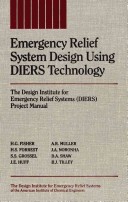Sunday, September 16, 2007

This is one of excellent book that i always wanted to recommend to many of you, typically those engineer who works (design, engineering, operation) in Oil & Gas platform, Chemical & Process plant, Refinery, Chemical plant, etc.
This is a must have book specifically for those works as SAFETY & LOSS PREVENTION engineer...
Emergency Relief System Design Using DIERS Technology
The Design Institute for Emergency Relief Systems (DIERS) Project Manual
By: Fisher, H.G.; Forrest, H.S.; Grossel, S.S.
Part of the PREFACE...
A consortium of 29 companies formed the Design Institute for EmergencyRelief Systems (DIERS) in 1976 under the auspices of the AIChE to evaluateexisting methods to design pressure relief systems for runaway reactions andto develop additional technology as needed. Approximately $1.6 million wasspent acquiring test data and documenting applicable methods for the designof emergency relief systems suitable for the discharge of two-phase vapor-liquid flow. Of particular interest was the prediction of when two-phase flowwould occur and the extent of vapor-liquid swell.
DIERS did not set out to add another two-phase flow computation procedure to the many that already existed. Rather, the goal was to identify methods that could be used to size safe, but not overly conservative, relief systems for two-phase vapor-liquid flow for flashing or frozen viscous or nonviscous fluids.
Techniques for sizing an emergency relief system for runaway reaction include:
- Direct empirical scaling of experimental data obtained in vessels witha very lower thermal inertia.
- Semi-theoretical graphical or analytical design methods.
- Computer simulation of incidents and flow through relief systems.
This project manual is primarily intended
- to provide a record of the DIERS research project.
- to help organizations acquire, assimilate and implement the vastamount of DIERS information and technology by serving as both areference and training tool.
- to illustrate ERS design methodology by means of selected sampleproblems.
- to serve as a text for the AIChE/DIERS Continuing EducationCourse entitled "Emergency Relief System Design Using DIERS Technology."
If you have subscribed to KNOVEL...Click HERE
If you want to own ONE...Click HERE
Related reading
Labels: Emergency Relief System, Loss Prevention, Safety

0 Comments:
Post a Comment
Let us know your opinion !!! You can use some HTML tags, such as <b>, <i>, <a>
Subscribe to Post Comments [Atom]
Home:
<< Home